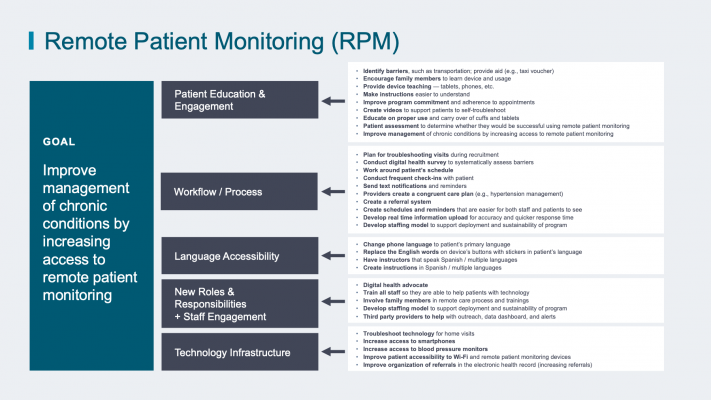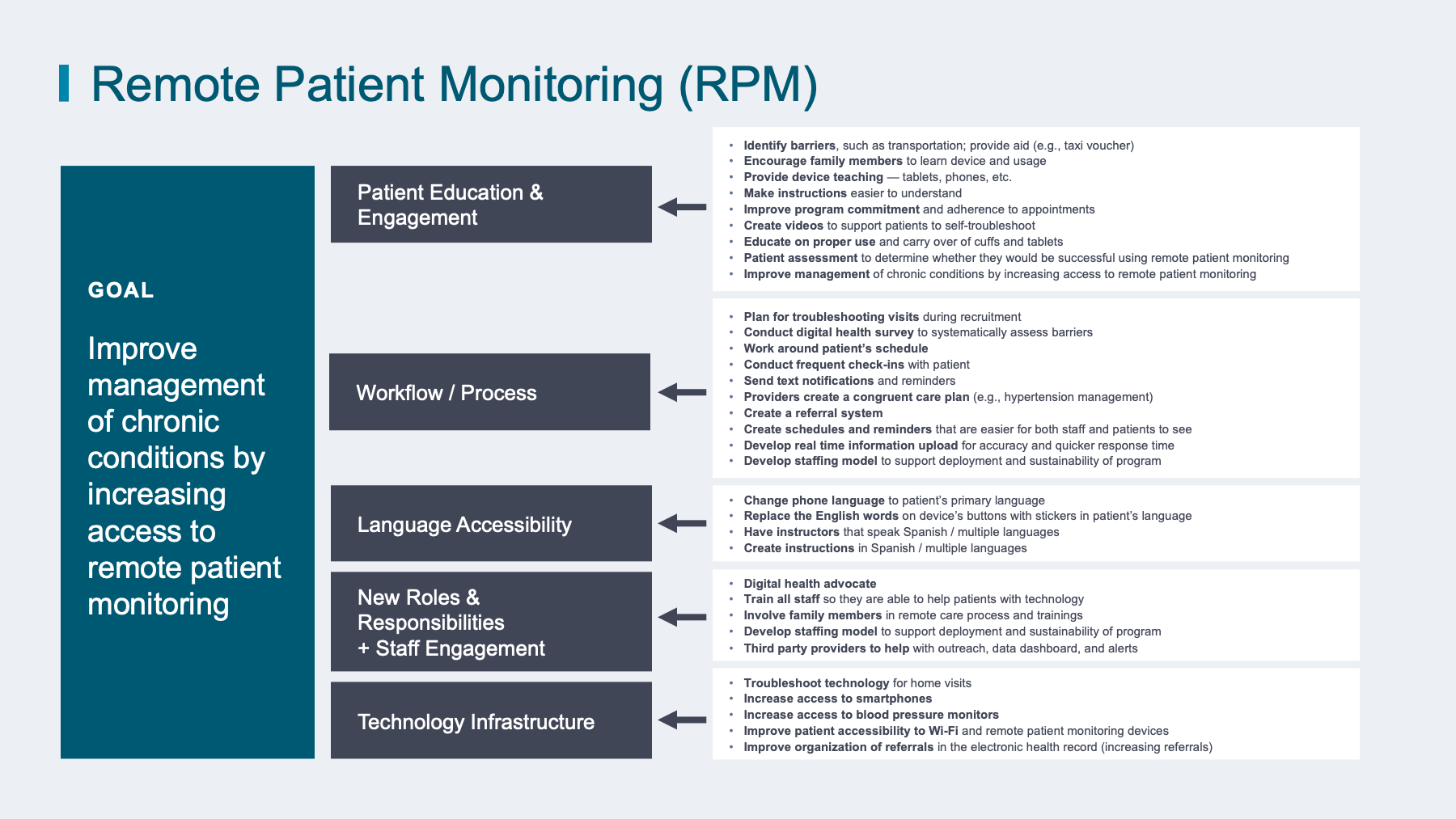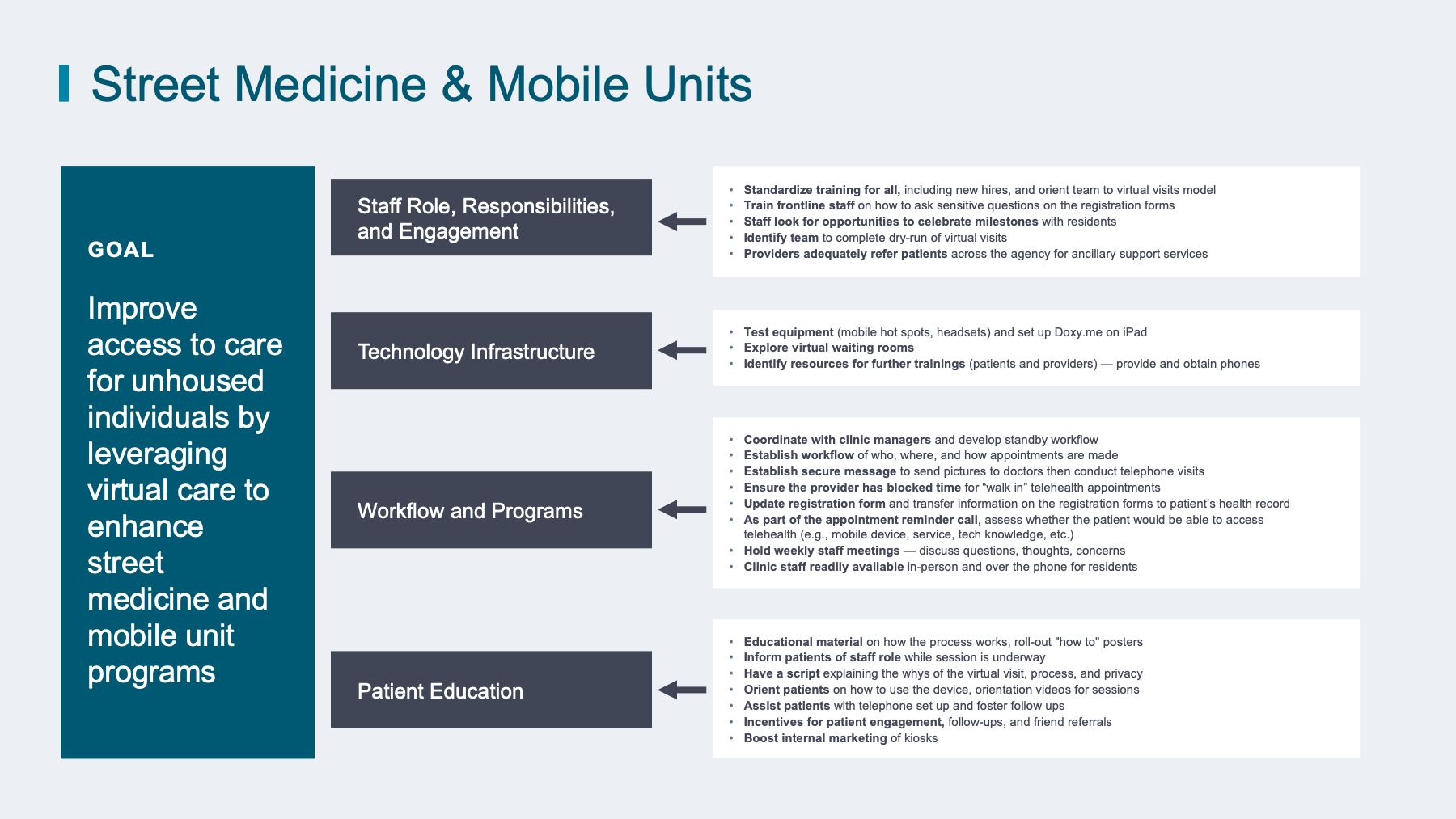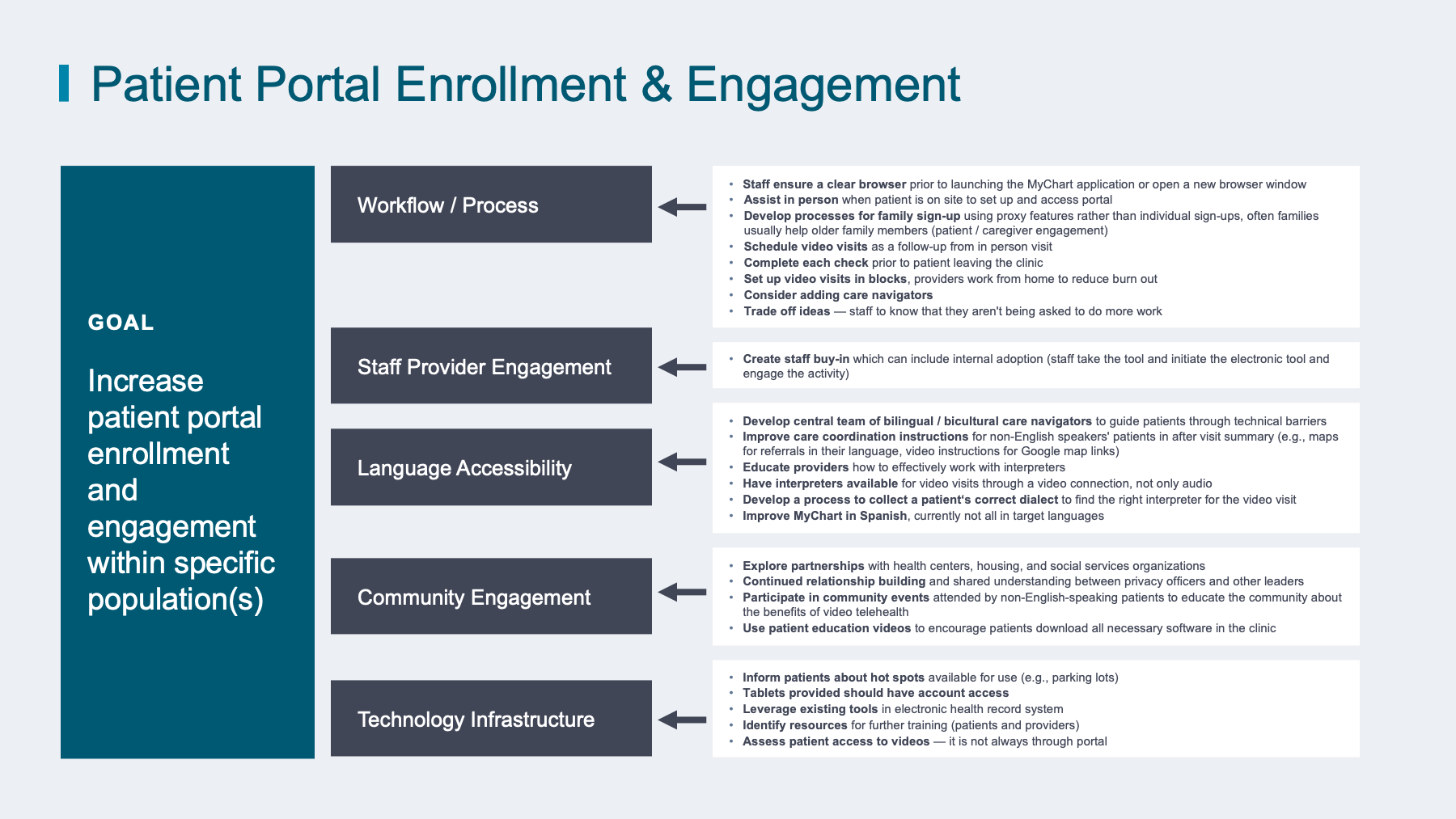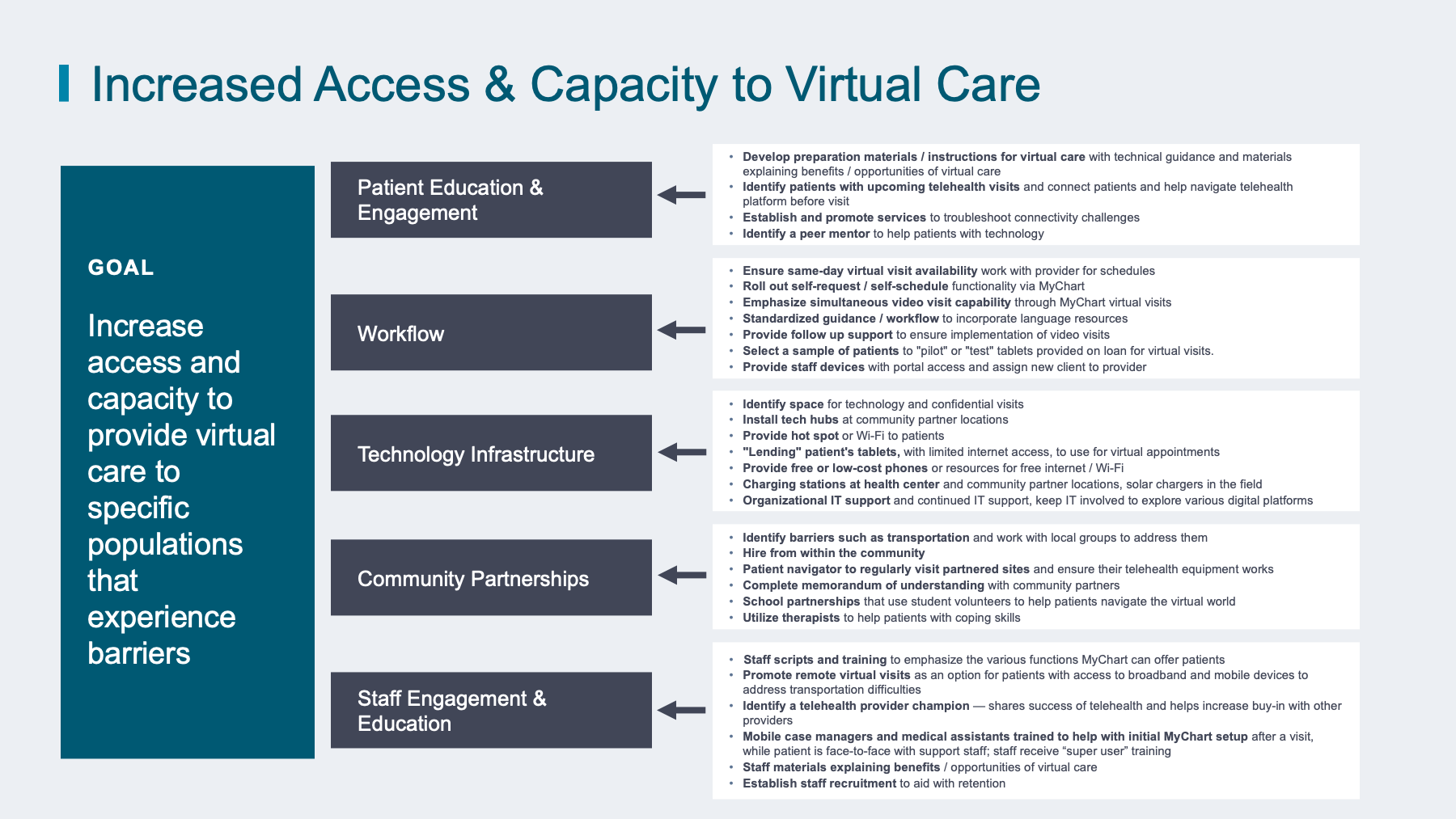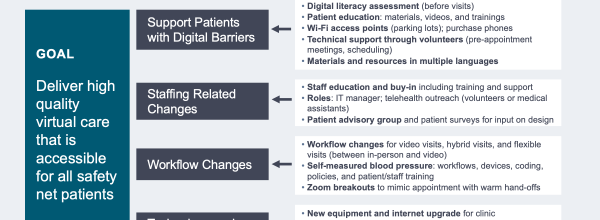How do you achieve equitable virtual care?
Through our work in the Virtual Care Innovation Network, a community health collaboration founded by Kaiser Permanente, we’re using the “driver diagram” structure to help organize what we currently believe to be the most important levers to reach our goals. This structure provides a simple visual way for others to understand the changes to consider when developing effective virtual care offerings for diverse, low-income patients.
You’ll see some of this work echoes our recent driver diagram on delivering high-quality video visits in California. However, the following graphics expand on that work three ways:
- They include lessons learned from safety net organizations across California, Oregon, Washington, Hawaii, Colorado, Georgia, Maryland, Virginia, and Washington, DC.
- They cover four distinct challenges:
- Remote patient monitoring (RPM)
- Street medicine and mobile units
- Patient portal enrollment and engagement
- Increased access and capacity to virtual care
- They are a work in progress! These driver diagrams describe projects in which our participants are continuing to test key levers of change.
There are a lot of changes that need to be made to provide equitable virtual care. These driver diagrams aim to provide guidance about what the right changes are to achieve this goal. You will need to work with your organization to prioritize which interventions you want to test and implement given your own internal resources and specific needs of your patients.
Find this useful or interesting? We’re constantly sharing stuff like this. Sign up to receive our newsletter to stay in the loop.

